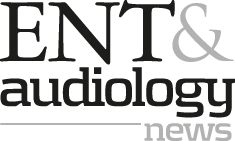Shigeharu Fujieda
The 5th Annual Meeting of the Japan Society of Immunology Allergology and Infection in Otorhinolaryngology (JIAIO) was held successfully with 427 attendees and 215 presentations, in Akita City, Japan.
This society comprises approximately 1,000 members, primarily practicing otolaryngologists from across Japan. It is dedicated to advancing academic research in the field of immunology, allergies, infectious diseases and head and neck cancer, as well as airway inflammation including eosinophilic sinusitis, allergic rhinitis, and asthma. It covers sublingual immunity, biological agents, anticancer drugs, photoimmunotherapy, immune checkpoint inhibitors, molecular targeted drugs, and prevention, diagnosis, testing, treatment and surgery.
At the opening ceremony, Professor Takechiyo Yamada, President of JIAIO 2025, presented the conference theme: ‘Discovery of New Pathologies and Development of New Treatments’ and provided an overview of the programme. He then delivered the Presidential Lecture, ‘Molecular Mechanisms of Pathogenesis and Treatment of Refractory Upper Airway Diseases’.
While the COVID-19 pandemic brought significant challenges, the swift development of effective vaccines and therapeutics underscored the critical importance of academic research, particularly in the field of immunology. Professor Tomohiro Kurosaki, President of the Japanese Society for Immunology, delivered the Invited Special Lecture, offering a comprehensive and insightful presentation on key topics shaping the future of immunology and related disciplines – including antibody production mechanisms, the immune system and the concept of a ‘universal antibody’.
Professor Yusei Ohshima, President of the Japanese Society of Pediatric Allergy, delivered the first Special Lecture, presenting the latest advances in the treatment and prevention of paediatric allergic diseases.
In the second Special Lecture, Professor Shigeru Yanagi of Gakushuin University spoke on ‘Discovery of New Pathologies and Development of New Treatments’. He introduced his discovery of MITOL, a unique membrane-type E3 ubiquitin ligase implicated in various aging-related and mitochondrial diseases. He discussed the analysis of associated signal transduction pathways and the development of novel mitochondria-targeted therapeutics aimed at rejuvenation.
Dr Yuma Fukutomi, Chief Director of the Allergen Laboratory at the National Sagamihara Hospital, gave the third Special Lecture, focusing on new pathologies and the practical clinical application of allergy components and antigen-specific IgE.
The symposiums were: ‘Controlling Immune-Allergic Infectious Diseases and Innate Lymphocytes’, ‘The Miracle of Photoimmunotherapy and Immune Checkpoint Inhibitors During Cancer Therapy’, and ‘Guidelines for Allergic Rhinitis and the Challenge to Zero’. There were panel discussions on the following themes: ‘Saving Patients with Viral Infection Countermeasures’, ‘Approaching Fungi and Allergies in Rhinosinusitis’, and ‘How to Enjoy Olfactory Research’. Then themed sessions: ‘Understanding New Pathology of Rhinosinusitis from Clinical Guidelines’, ‘Otorhinolaryngological Diseases with an Immunological Approach’, ‘New Pathology of Type 2 Inflammatory Diseases’, and ‘Unknown Pathology of Cough and New Treatments’. All symposiums, panel discussions and themed sessions were met with an overwhelming response and contributed greatly to the success of the conference.
Beyond the rich variety of presentations and discussions, several overarching lessons emerged from the meeting. First, advances in understanding the molecular mechanisms of diseases such as eosinophilic sinusitis, allergic rhinitis, and head and neck cancers are paving the way for new targeted and immunological therapies. Second, the progress in immunology – particularly innate lymphocytes, immune checkpoint inhibitors, and photoimmunotherapy – highlighted how rapidly basic science translates into clinical practice. Third, allergic diseases such as hay fever and paediatric allergy were recognised not only as medical concerns but also as pressing social issues, with nationwide initiatives such as the ‘Zero Pollen, Zero Allergy’ campaign and the growing role of sublingual immunotherapy. Finally, the meeting emphasised the importance of interdisciplinary collaboration and international dialogue, strengthening ties across immunology, pediatrics, molecular biology and otolaryngology.
The events included: the Society Encouragement Award; Diversity Committee projects; a medical aerosol ICD training course; Internationalization Promotion Committee projects; and sessions by the Committee on Upper Respiratory Tract Infection Countermeasures and Appropriate Use of Antimicrobial Agents. All contributed significantly to the success of the conference.
In addition to the academic discussion, the attendees also enjoyed the reception with Japanese regional food and culture ‘Namahage’. This is a traditional folk event that takes place in Oga City, Akita Prefecture. On the night of New Year's Eve, young people from the area put on demon-like masks and wear costumes made of straw and go around to each house, shouting things such as “Are there any bad children here?” to warn against bad behavior and ward off evil spirits.
At the closing ceremony, Dr Nhi Kieu Thi LE was commended and given the best award for International-English Session. The next meeting will be held at Takasaki in April, 2026.
The 5th Annual Meeting of the Japan Society of Immunology Allergology and Infection in Otorhinolaryngology
Event Details
Date: 17 April 2025 - 19 April 2025
Location name:
Nigiwai Exchange Hall “AU”, Akita, Japan



